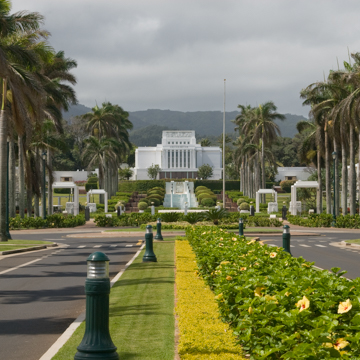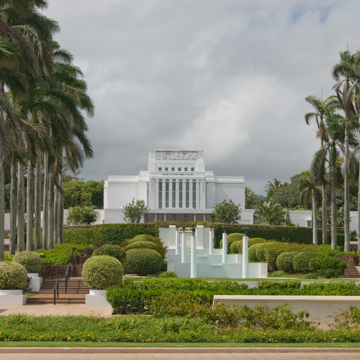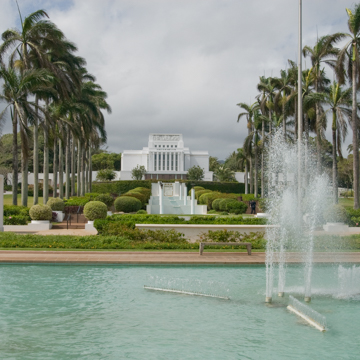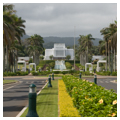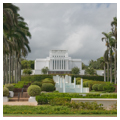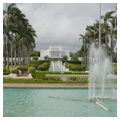Highly modern for its day, the reinforced-concrete Laie temple relies upon proportion rather than ornament or embellishment for its beauty. Sited at the terminus of a landscaped boulevard, the building, with its fifty-foot-high central portion, was Laie's primary landmark and tourist attraction prior to the opening of the Polynesian Cultural Center in 1963. The dramatic approach, a series of rising terraces, includes four concrete-lined pools with fountains and terminates with a statue of a Hawaiian mother and three children by Utah sculptor Avard Fairbanks. Behind the temple stands a sculpture by Fairbanks of the Prophet Lehi blessing his sons. According to Mormon belief, Lehi was a leader of a colony of Israelites who left Jerusalem in 600 B.C., crossed the Pacific, and settled on the west coast of South America, from whom the Hawaiians were descended. The five-acre grounds were planted by Joseph Rock, a botanist at the University of Hawaii.
The temple has a Greek cross plan. On the exterior are four sculpted friezes by Leo and Avard Fairbanks that depict in bold relief the outstanding events of the four principal dispensations: Adam and the Hebrew prophets of the Old Testament history; Jesus and his apostles and New Testament history; a history from the Book of Mormon; and the Father and Son appearing to the praying boy Joseph Smith and ushering in the present dispensation.
The architects for the temple, Hyrum C. Pope (1888–1939) and Harold W. Burton, were prominent Salt Lake City architects who designed a number of LDS temples and churches. The Laie temple follows a design similar to their Cardston Alberta Temple (1923) in Canada, which was started before the Laie temple, but completed four years after the Laie temple was dedicated.















